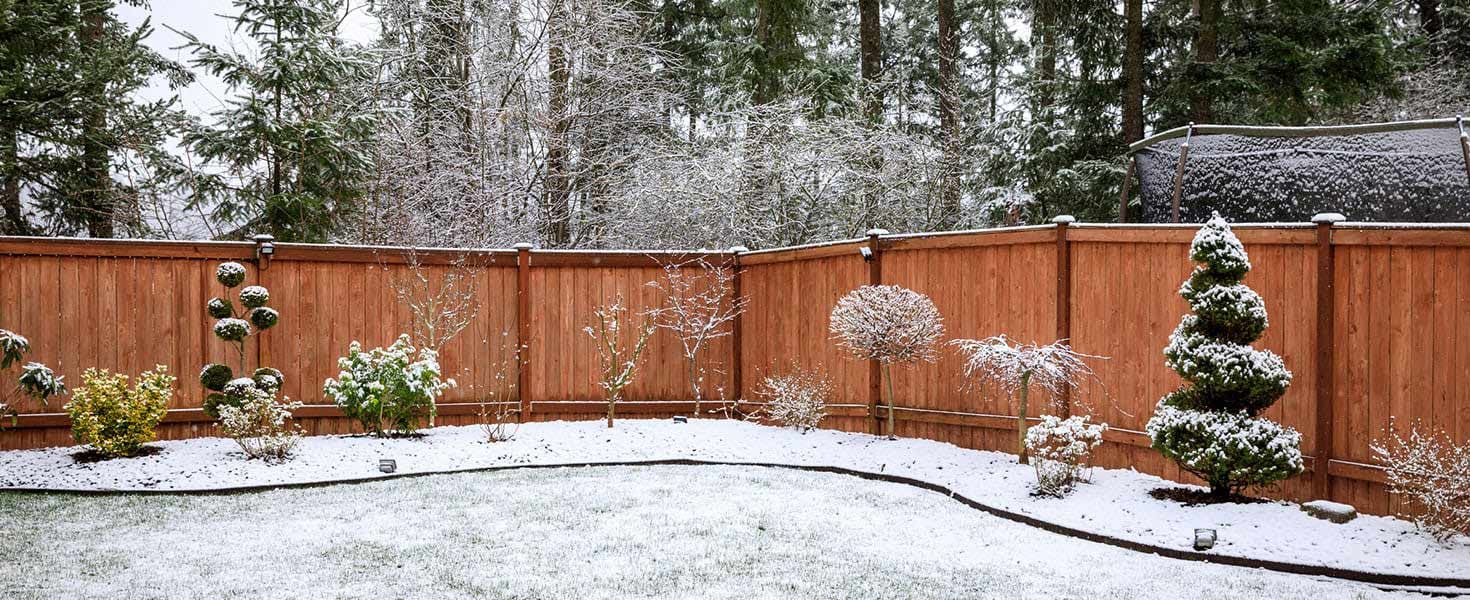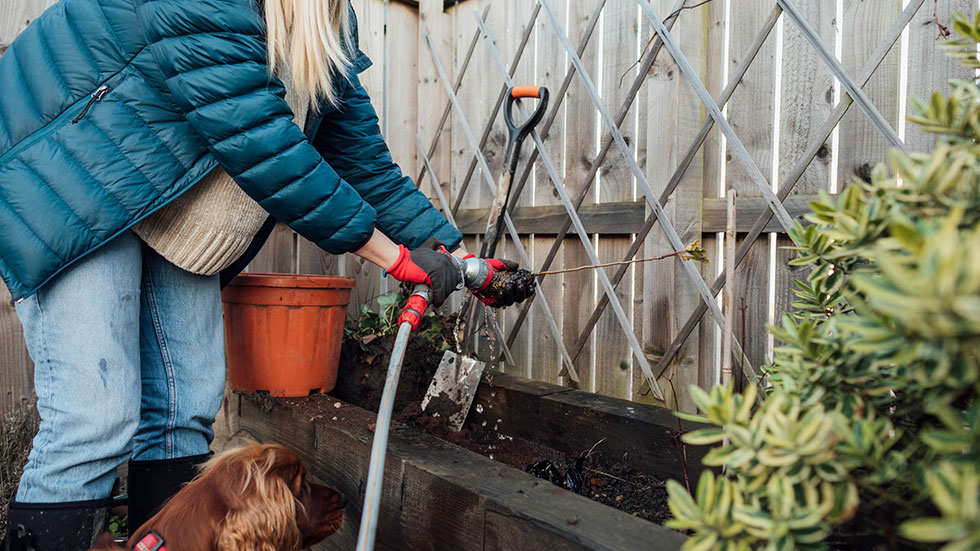

Yet another year has flown by and winter is here already. Many of us are spending time switching our summer wardrobe for colder weather, digging our snow boots out of storage, and preparing for the upcoming holidays. Something that may have fallen off your radar is preparing your lawn to make sure it’s healthy come spring and summer. Here are our top-10 winter lawn care tips that will help your yard get through the coldest months of the year and be ready for spring.

1. AERATE
Right before the first expected frost, you’ll want to aerate your lawn. Aerating gives your lawn time to breathe before the grass goes dormant, helping to relieve any compaction that built up during the warmer months.
You can call a lawn service to aerate your yard. If you decide to do it yourself, start by renting an aerator. Then, apply one inch of water to the lawn the day before you aerate in order to soften the soil. For lightly compacted soil, you’ll go over your entire lawn once with the aerator. Or, if your lawn is significantly compacted (or you’ve never done this before), go over the lawn twice (with the second pass perpendicular to the first). Leave the soil plugs on the lawn, and once you’re done, give it a good watering.
2. FERTILIZE
After aerating your lawn, you’ll want to fertilize it. This provides essential nutrients your grass will store in its roots during the winter months. Then, in the spring, your grass will release the stored nutrients, making it greener and healthier. Use a fertilizer with at least 10% nitrogen.

3. CLEAN UP LEAVES
If leaves have piled up on your lawn during the fall, you’ll want to remove them before winter arrives. Leaves can suffocate your lawn and if they are wet, they can breed disease. You can either mulch the leaves with your mower to recycle their nutrients into your lawn. If they are too thick, wet, or matted, rake them up and discard them.
4. MOVE LAWN ITEMS INTO STORAGE
If you have things like furniture, fire pits, or other items in your yard, it’s important to move them into storage for the winter. Not only will this help those items last longer, it will also prevent grass from dying underneath the items, where moisture won’t evaporate and the lawn can’t breathe.
5. CUT THE GRASS SHORTER
During the fall, consider lowering the mower deck until the height is about 2–2.5 inches. Shorter grass can decrease the chance of snow mold buildup. Plus, removing extra plant tissue decreases the barrier from soil to air which can keep the grass free of excess moisture.
6. STAY OFF THE LAWN
After the first frost of the season, you’ll want to avoid walking on your lawn as much as possible. Walking too much on dormant grass makes it weak, which can damage it in the long run.
7. BE AWARE OF SALT AND ROAD RESIDUE
De-icing products that contain salt can impede nutrient uptake and damage nearby grass, causing bare spots. If you use these products for treating walkways across or near your lawn, choose products made with sodium chloride alternatives. Additionally, when shoveling front sidewalks or the bottom of the driveway, avoid piling the snow on the grass as it can contain salt and residue from the roadway.
8. SEED AND SOD
If you have bare patches in your yard, you can lay pieces of sod over them to prevent erosion and soil compaction. As long as the soil was prepared properly prior to freezing, sod can be safely installed on frozen ground. Or, you can spread grass seed during cold months or when there’s snow on the ground.
9. WEED AND WATER
If you have a few mild or rainy winter days, you may notice weeds starting to appear. Take a few minutes to remove them before they take over your lawn and garden. Or, before the ground freezes, you can apply a pre-emergent weed killer that inhibits weed growth before it even starts.
Additionally, sunshine, wind, and lack of precipitation can dry out a lawn. If you experience a winter drought and have a day above 40°F, water your lawn to prevent dehydration and other damage.

10. TAKE CARE OF YOUR LAWN EQUIPMENT
While not directly related to your lawn's condition over the winter, it’s important to take time to care for your lawn equipment—like your mower—to ensure proper working condition for spring. Sharpen the mower blades so they cut cleanly instead of tearing the grass. If necessary, add fuel stabilizer and drain the gas. Remember to follow maintenance instructions for your particular type of mower. Give your mower and other equipment a good cleaning and tightening, and repair or replace parts as needed.
